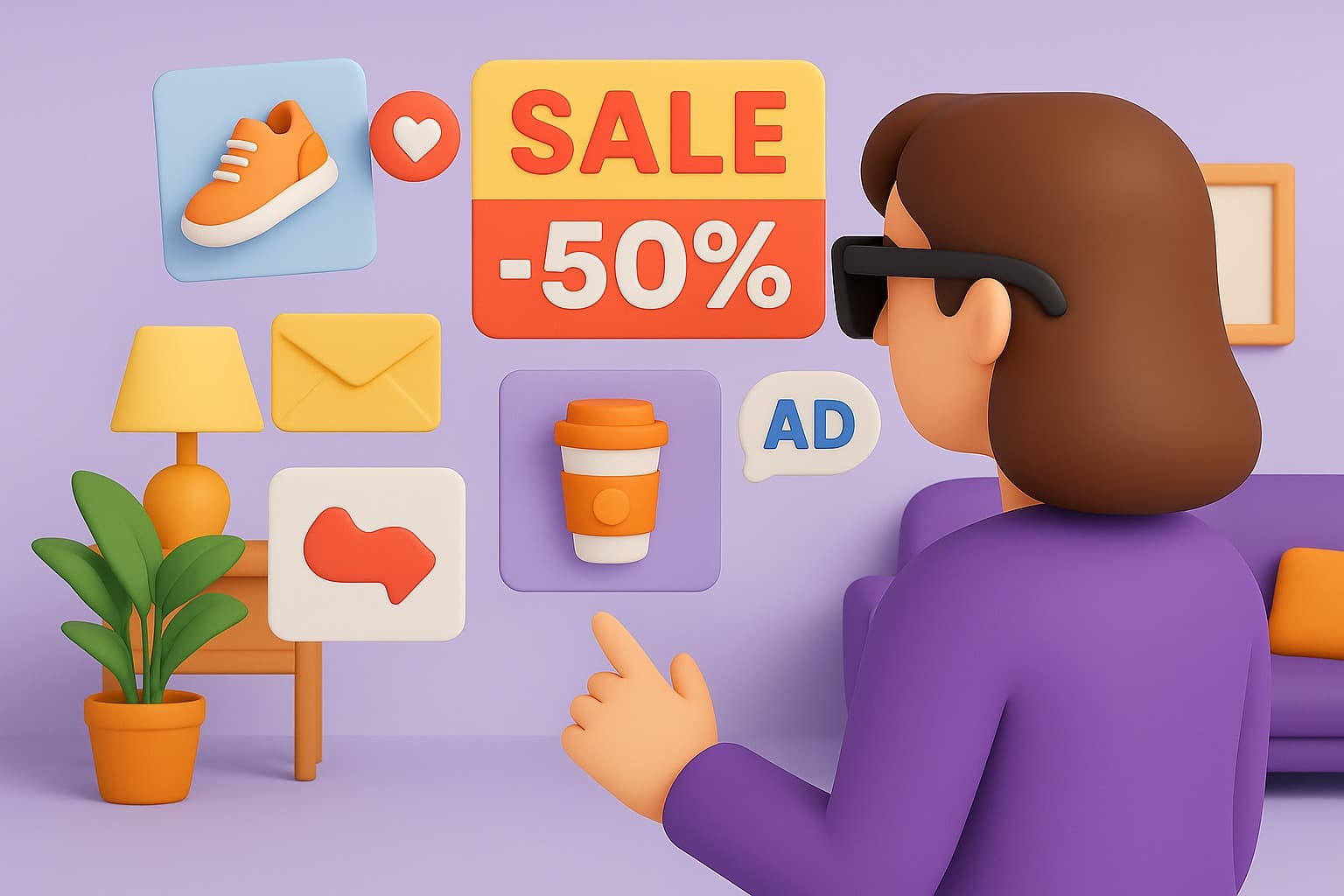The Privacy Paradox of AR: When Your Surroundings Become the Ad

When Reality Gets an Upgrade, Privacy Gets a Downgrade
The first time you put on an AR headset, it feels revolutionary.
Your living room fills with floating notes, 3D diagrams, and virtual art.
Reality finally gets an upgrade — personalized, responsive, alive.
But that’s also when your privacy exits the chat.
Because while AR lets you see the digital world layered over the physical…
it also lets the digital world see you — and everything around you.
Your Walls Have Eyes (and So Does Your Headset)
To function, AR devices need to know everything:
Where you are. What you’re looking at. How you move. Even how you feel.
They scan rooms, map surfaces, and track gestures with millimeter precision.
That means your living space — art, family photos, possessions — is constantly being recorded and analyzed.
This isn’t “camera access.”
It’s environmental surveillance wrapped in sleek hardware.
And once that spatial data leaves your device, you have zero control.
Spatial Data: The New Oil
If personal data was the oil of the last decade, spatial data is the crude fuel of this one.
It tells companies not just who you are, but where and how you live.
AR platforms build 3D maps to anchor digital objects.
But those maps are gold for advertisers:
- They see the brands in your environment.
- They measure how long your gaze lingers.
- They infer mood from micro-movements or pupil dilation.
This isn’t “you like coffee.”
It’s: “You paused at a coffee ad at 8:42 AM in your kitchen next to a Nespresso machine.”
From Personalized to Predictive
AR is marketed as “personalized,” but personalization is just prediction in disguise.
The more your headset observes you, the better it learns your habits.
Soon, ads won’t interrupt your day — they’ll blend into it.
- A virtual poster on your wall updates based on browsing history.
- A product appears in your favorite AR game.
- Ambient lighting shifts to prime your mood for shopping.
When advertising becomes part of your environment, opting out means closing your eyes.
Apple Vision Pro and the New Normal
Devices like Apple Vision Pro, Meta Quest 3, and Snap Spectacles promise on-device processing and privacy.
But the reality is more complex.
Even when spatial data is processed locally, usage patterns and gaze analytics often sync to the cloud for “experience improvement.”
Developers can request access to spatial anchors, meaning your room geometry can be shared with third-party apps.
Every app becomes a window into your home.
The Privacy Policy No One Reads
AR privacy policies are novels.
Buried in them is language like:
“We may collect spatial maps, environmental scans, and biometric information to enhance user experiences.”
Translation: We record everything your device sees.
And because spatial data isn’t clearly defined as “personal information,” most privacy laws don’t regulate it.
So even if you delete an app, the 3D model of your living room might remain on a server forever.
How to Stay Invisible in a World That Sees Everything
You can’t stop AR from scanning your surroundings — but you can contain the data.
✅ Review app permissions; disable camera/spatial mapping for apps that don’t need it.
✅ Use offline or local-only AR apps when possible.
✅ Use burner emails instead of linking main accounts.
✅ Cover private documents or reflective surfaces before scanning.
✅ Regularly delete environment maps and cached data in AR settings.
The goal isn’t paranoia — it’s containment.
If data is the new pollution, digital hygiene is the new recycling.
The Blurring of Worlds
The privacy problem with AR isn’t that it’s futuristic — it’s that it’s intimate.
It doesn’t just track your clicks. It tracks your gaze.
It doesn’t just read your messages. It reads your surroundings.
The physical and digital worlds are merging —
but privacy laws are still stuck in 2010.
Unless we adapt fast, we’ll wake up in a world where reality itself is personalized — not for our benefit, but for profit.
Because once your surroundings become a data source, every object becomes an ad waiting to happen.
In augmented reality, even the air is up for sale.